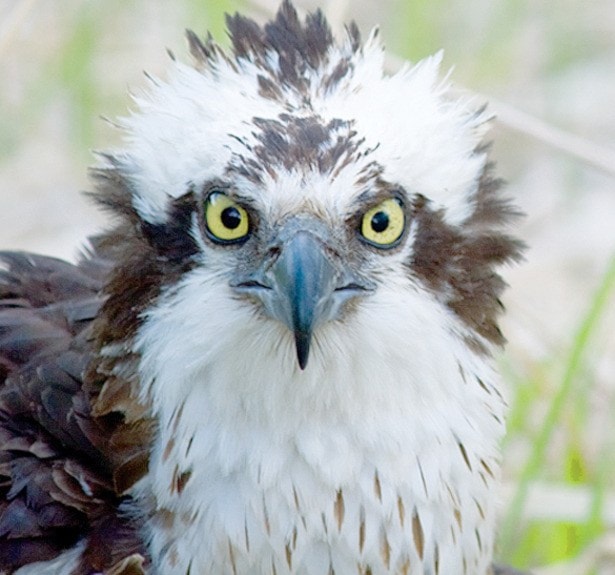The osprey adults have returned from warmer climates, the nest has a near-full complement of eggs, and the cameras are rolling at crestonwildlife.ca.
This year’s nest cam will once again show live streaming images of the hatching, feeding and daily life of a pair of osprey and their eggs. This project is a joint initiative between the Fish and Wildlife Compensation Program (FWCP) and the Creston Valley Wildlife Management Area (CVWMA), where the nest is located.
“We had a great season last year,” said John Krebs, crew lead with the FWCP in the Columbia region, which is a partnership between BC Hydro, the province of B.C., and Fisheries and Oceans Canada. “All three eggs hatched successfully and two of the three chicks fledged at the end of the season. It was fascinating to watch their behaviour and to have a ‘birds-eye’ view into the nest. This year, we are hoping to see similar nest success.”
The first egg was observed in the nest May 13, and by May 17 the tally had risen to three. They hatched on June 16, 18 and 22, and the chicks have been named after popular Creston Valley crops: Pepper, Cherry and Gus (as in asparagus).
Typically ospreys lay three or four eggs, with the eggs being laid one to three days apart and hatching in the same sequence. This means that if food is scarce, the older, larger chick will likely out-compete its siblings and survive. If, on the other hand, there is plentiful food then all three chicks will have a better chance of survival.
“We think that the food supply should be relatively good this year,” added Krebs. “In 2009, the Ministry of Environment estimated a record-high 48 million kokanee in the main body of Kootenay Lake, of which 33 million were fry. Many of those fry will now be adults and a prime food source for this osprey family.”
That plentiful food supply is aided by the nutrient restoration program in Kootenay Lake that is co-ordinated jointly by the province of B.C. and the FWCP, with the South Arm nutrient additions being funded through the Kootenai Tribe of Idaho. This program feeds the microscopic phytoplankton that is the base for the food web in the lake’s ecosystem.
If all goes well, the osprey chicks will take nearly two months to fledge and then remain on, or around, the nest until early September, before heading south for winter. Therefore, there is ample time to watch the birds’ behaviour throughout the summer.
“It really is something special to hear the chicks start screeching and moving out of the way prior to an incoming parent flying in with a talon full of fish,” said Carla Ahern from the CVWMA. “This project provides a first class opportunity to view nature without getting in its way.”
Visit crestonwildlife.ca for live streaming images of the osprey and for more information on the FWCP visit fwcp.ca.
Osprey Facts
•Ospreys (Pandion haliaetus) return to the same nest, made of sticks, often located on man-made elevated structures such as power poles, buoys and bridges as well as cliffs and snags.
•The diet of an osprey consists nearly entirely of live fish. The nutrient restoration program in Kootenay Lake has helped boost kokanee numbers is, therefore, playing an important role in supporting the osprey population.
•Ospreys can become completely submerged when diving for fish and still take off with their prey, unlike bald eagles, which pluck the fish from the surface.
•There have been reports of ospreys drowning after locking into a fish that is too big and strong to bring to the surface.
•Ospreys were once threatened around the world primarily due to the use of DDT and other pesticides, but their numbers have rebounded in recent decades.
•They are the most widely distributed bird of prey, found on all continents except Antarctica.
•Ospreys in the Columbia Basin usually migrate in winter to the southern United States or Mexico.
•Ospreys are unique in that they have an opposable toe that can face forward or backward. When sitting on a branch it usually has three toes on the front and one on the back. When holding a fish it usually has two toes on each side of the fish. When flying with its prey the osprey invariably flies with the fish head first to reduce wind resistance.
